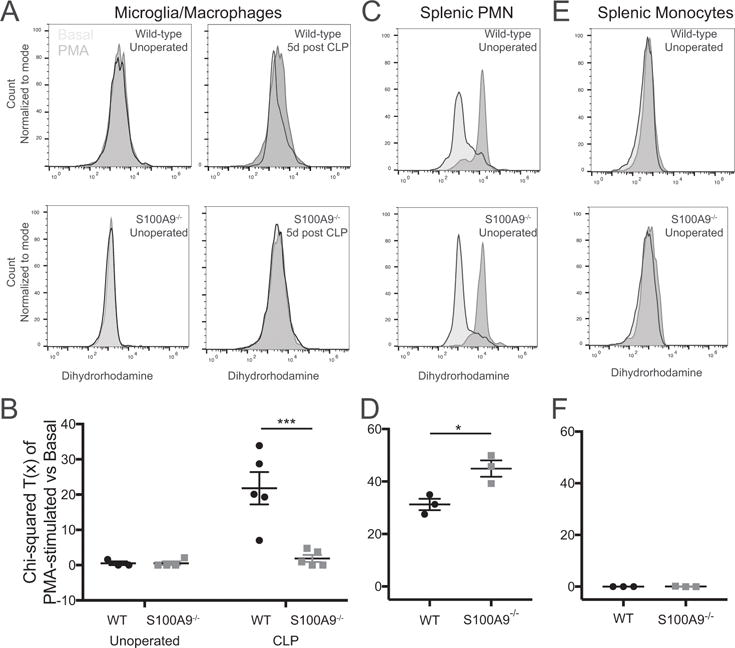Fig. 6.

S100A9 deficiency abolishes priming of microglial ROS production after CLP. Microglia isolated from sepsis survivor mice 5 days after CLP produce increased ROS, as measured by dihydrorhodamine fluorescence, when stimulated ex vivo with PMA (A,). Microglia isolated from either naïve mice or S100A9−/− sepsis survivor mice show no response to PMA stimulation (A). The PMA response, quantified by the chi-squared difference in fluorescence between basal and PMA stimulated microglia, is significantly greater in wild-type sepsis survivor mice than in S100A9−/− sepsis survivor mice or naïve controls (B, 2-way ANOVA, p=0.045 for effect of genotype). ROS response of splenic neutrophils is preserved at baseline in S100A9−/− mice (C,D). By this method, naïve splenic monocytes did not produce a measurable ROS response (E,F). * p < 0.05, *** p < 0.001
